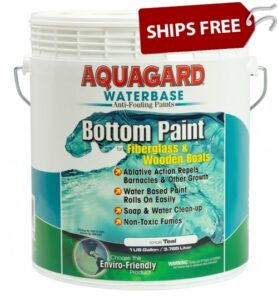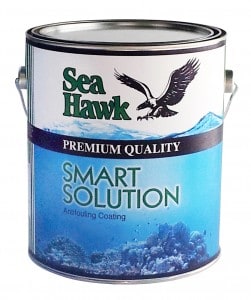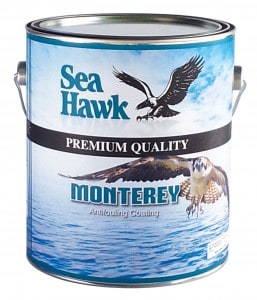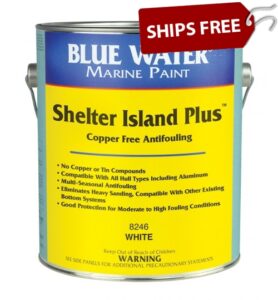In the world of marine maintenance, the quest for effective bottom paints has historically led to the use of toxic chemicals and heavy metals, posing a serious threat to aquatic ecosystems. However, as awareness of environmental issues grows, there has been a notable shift towards eco-friendly formulations. Today, manufacturers are increasingly turning to safer alternatives, such as biocide-free coatings and natural enzyme-based solutions, to protect hulls from fouling while minimizing harm to marine life.
The traditional approach to antifouling paints has been centered around the use of biocides, such as copper and zinc compounds, to deter marine organisms from attaching to the hull. While effective, these chemicals can leach into the water, causing pollution and harm to aquatic life. Additionally, the buildup of these toxic substances in the marine environment can have long-lasting ecological impacts.

Flexdel’s Aquagard boat bottom paints are considered “Environmentally Preferable” due to releasing low levels of volatile organic compounds (VOC) and heavy metals.
In response to these concerns, manufacturers are now developing bottom paints that rely on alternative mechanisms to prevent fouling. One approach involves the use of non-biocidal coatings that create a physical barrier, making it difficult for organisms to attach to the hull. These coatings can be effective for short periods but may require more frequent application compared to traditional paints.

Smart Solution is the next generation in antifouling technology and is engineered to be the most effective environmentally friendly antifoulant available.
Another promising development is the use of natural enzyme-based solutions. These formulations harness the power of enzymes to disrupt the attachment and growth of fouling organisms, without relying on harmful chemicals. Enzymes are biodegradable and environmentally friendly, making them a sustainable alternative to traditional antifouling agents.

Monterey is Sea Hawk’s solvent-free water-based bottom paint that is designed to give the best protection against all types of marine fouling while remaining friendly to the environment.
The shift towards eco-friendly formulations is also driven by regulatory changes and consumer demand for greener products. Many countries have implemented restrictions on the use of toxic antifouling paints, pushing manufacturers to innovate and develop safer alternatives. Consumers, too, are increasingly conscious of the environmental impact of their purchases and are choosing products that align with their values.
While the transition to eco-friendly bottom paints is a positive step towards environmental preservation, challenges remain. Manufacturers must ensure that these new formulations are not only effective at preventing fouling but also durable enough to withstand the harsh marine environment. Additionally, the cost of eco-friendly paints may be higher than traditional options, which could pose a barrier to widespread adoption.

SHELTER ISLAND PLUS is a high-performance solvent-based antifouling paint that uses a high-end technology of tralopyril and zinc pyrithione.
The shift towards eco-friendly formulations in bottom paints represents a significant step towards sustainable marine maintenance practices. By embracing natural ingredients and formulations, manufacturers are not only reducing the environmental impact of their products but also contributing to the preservation of marine ecosystems for future generations. If you need any assistance selecting an eco-friendly bottom paint please reach out to our customer service team 888-505-2313.

The Bottom Paint Store customer support team is available Monday through Friday 9 a.m. until 5:00 p.m. EST.

